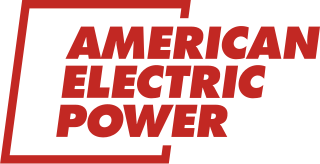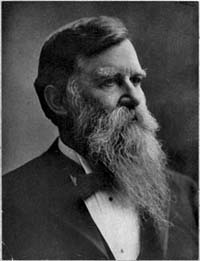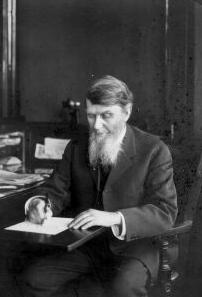Related Research Articles
AM General is an American heavy vehicle and contract automotive manufacturer based in South Bend, Indiana. It is best known for the civilian Hummer and the military Humvee that are assembled in Mishawaka, Indiana. For a relatively brief period, 1974–1979, the company also manufactured transit buses, making more than 5,400 of them.

Studebaker was an American wagon and automobile manufacturer based in South Bend, Indiana, with a building at 1600 Broadway, Times Square, Midtown Manhattan, New York City. Founded in 1852 and incorporated in 1868 as the Studebaker Brothers Manufacturing Company, the firm was originally a coachbuilder, manufacturing wagons, buggies, carriages and harnesses.

The Studebaker Commander is the model name of several automobiles produced by the Studebaker Corporation of South Bend, Indiana and Studebaker of Canada Ltd of Walkerville and, later, Hamilton, Ontario (Canada). Studebaker began using the Commander name in 1927 and, with interruptions in 1936 and 1959-63, continued to use it until 1964. The name was applied to various products in the company's line-up from year to year. The Commander was the company's mainstream product, the Studebaker Champion was the junior model, and other models were short lived or renamed as market conditions required.

Studebaker of Canada Ltd. was the name given to Studebaker Corporation's Canadian manufacturing arm.
Northern States Power Company (NYSE: NSP) was a publicly traded S&P 500 electric and natural gas utility holding company based in Minneapolis, Minnesota, that is now a subsidiary of Xcel Energy.
The Studebaker-Packard Corporation is the entity created in 1954 by the purchase of the Studebaker Corporation of South Bend, Indiana, by the Packard Motor Car Company of Detroit, Michigan. While Studebaker was the larger of the two companies, Packard's balance sheet and executive team were stronger than that of the South Bend company.

American Electric Power Company, Inc. (AEP), is a major investor-owned electric utility in the United States, delivering electricity to more than five million customers in 11 states.

The Public Utility Holding Company Act of 1935 (PUHCA), also known as the Wheeler-Rayburn Act, was a US federal law giving the Securities and Exchange Commission authority to regulate, license, and break up electric utility holding companies. It limited holding company operations to a single state, thus subjecting them to effective state regulation. It also broke up any holding companies with more than two tiers, forcing divestitures so that each became a single integrated system serving a limited geographic area. Another purpose of the PUHCA was to keep utility holding companies engaged in regulated businesses from also engaging in unregulated businesses. The act was based on the conclusions and recommendations of the 1928-35 Federal Trade Commission investigation of the electric industry. On March 12, 1935, President Franklin D. Roosevelt released a report he commissioned by the National Power Policy Committee. This report became the template for the PUHCA. The political battle over its passage was one of the bitterest of the New Deal, and was followed by eleven years of legal appeals by holding companies led by the Electric Bond and Share Company, which finally completed its breakup in 1961.
DTE Electric Company was founded in 1886.

The North American Company was a holding company incorporated in New Jersey on June 14, 1890, and controlled by Henry Villard, to succeed to the assets and property of the Oregon and Transcontinental Company. It owned public utilities and public transport companies and was broken up in 1946, largely to comply with the Public Utility Holding Company Act of 1935.
The Union Electric Company of Missouri was an electric power utility that was organized in 1902 and grew to be one of the large U.S. companies listed among the S&P 500. In 1997, its holding company merged with a smaller neighboring utility, Central Illinois Public Service Company through its holding company, CIPSCO Inc., to form Ameren Corporation based in St. Louis, Missouri.

WEC Energy Group is an American company based in Milwaukee, Wisconsin that provides electricity and natural gas to 4.4 million customers across four states.

Avangrid, Inc., is an energy services and delivery company. AVANGRID serves about 3.1 million customers throughout New England, Pennsylvania and New York in the United States.

Clement Studebaker was an American wagon and carriage manufacturer. With his brother Henry, he co-founded the H & C Studebaker Company, precursor of the Studebaker Corporation, which built Pennsylvania-German Conestoga wagons and carriages during his lifetime, and automobiles after his death, in South Bend, Indiana.

John Mohler Studebaker was the Pennsylvania Dutch co-founder and later executive of what would become the Studebaker Corporation automobile company. He was the third son of the founding Studebaker family, and played a key role in the growth of the company during his years as president, from 1868 until his death in 1917.
Clement Studebaker Jr. was an American businessman and the son of wagon, carriage and automobile manufacturer Clement Studebaker. He held executive positions in the family's automobile business, Studebaker Corporation, and later became the president and chairman of several other important companies.

The Vandalia Railroad Company was incorporated January 1, 1905, by a merger of several lines in Indiana and Illinois that formed a 471-mile railroad consisting of lines mostly west of Indianapolis.
North American Co. v. Securities and Exchange Commission, 327 U.S. 686 (1946), is a United States Supreme Court case holding that a Securities and Exchange Commission (SEC) order under the Public Utility Holding Company Act (PUHCA) directing a public utility holding company to divest its securities of all companies except for one electric company did not violate the Commerce Clause or the Fifth Amendment to the United States Constitution.

The Electric Bond and Share Company (Ebasco) was a United States electric utility holding company organized by General Electric. It was forced to divest its holding companies and reorganize due to the passage of the Public Utility Holding Company Act of 1935. Following the passage of the Act, the U.S. Securities and Exchange Commission (SEC) selected the largest of the U.S. holding companies, Ebasco to be the test case of the law before the U.S. Supreme Court. The court case known as Securities and Exchange Commission v. Electric Bond and Share company was settled in favor of the SEC on March 28, 1938. It took twenty-five years of legal action by the SEC to break up Ebasco and the other major U.S. electric holding companies until they conformed with the 1935 act. It was allowed to retain control of its foreign electric power holding company known as the American & Foreign Power Company (A&FP). After its reorganization, it became an investment company, but soon turned into a major designer and engineer of both fossil fuel and nuclear power electric generation facilities. Its involvement in the 1983 financial collapse of the Washington Public Power Supply System's five nuclear reactors led to Ebasco's demise because of the suspension of nuclear power orders and lawsuits that included numerous asbestos claims. The U.S. nuclear industry stopped all construction of new facilities following the 1979 nuclear meltdown at Three Mile Island, going into decline because of radiation safety concerns and major construction cost overruns.
Electric Bond Share Company v. Securities & Exchange Commission, 303 U.S. 419 (1938), was a United States Supreme Court case in which the court upheld the constitutionality of the Public Utility Holding Company Act of 1935.
References
- 1 2 3 4 5 North American Light and Power Company 1916 - signed by Clement Studebaker, Scripophily.com
- ↑ "The History of the E-M-F company". Archived from the original on 2007-08-23. Retrieved 2007-08-23.
- ↑ Jeremy J. Siegel, Stocks for the Long Run , McGraw-Hill, Second Edition, 1998, ISBN 0-07-058043-X
- 1 2 North American Co. v. Securities and Exchange Commission , 327U.S.686 (1946). FindLaw.com